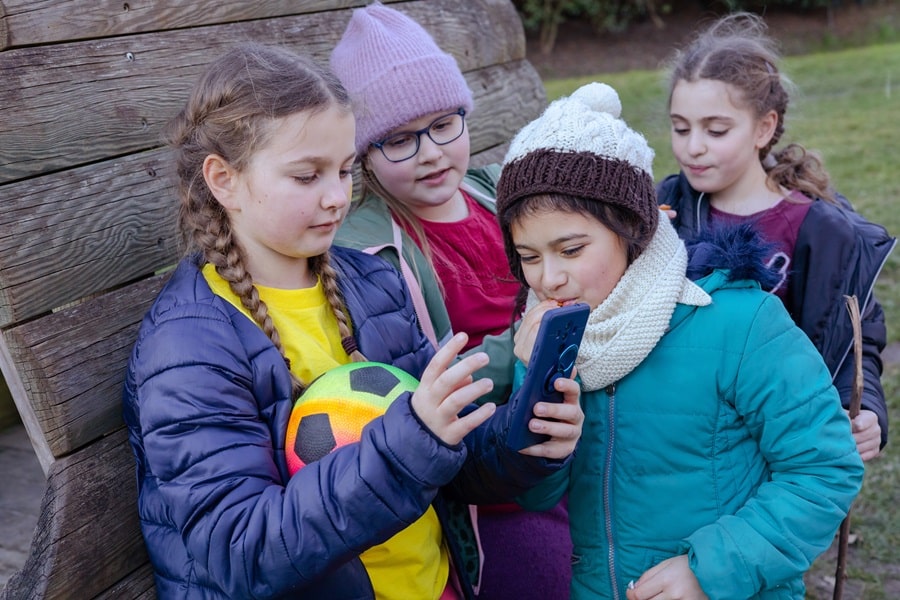
In today’s digital age, children are spending more time than ever in front of screens, whether for online education, gaming, or leisure. While technology has many advantages, too much screen time can harm children’s eyes, causing eye strain and other visual discomforts. As parents and caregivers, we must recognize the consequences of extended screen exposure on children’s eyes and develop ways to prevent eye strain. In this blog, we will look at the effects of excessive screen time on children’s eye health and offer practical advice for reducing eye strain and promoting healthy vision practices.
The Effects of Too Much Screen Time on Kids’ Eyes:
1) Digital Eye Strain:
Prolonged exposure to screens can cause digital eye strain, also known as computer vision syndrome. Symptoms may include eye fatigue, dryness, redness, burning, headache and blurred vision. Children who stare at screens for long periods of time without taking a break are especially vulnerable to these symptoms, because their developing eyes are more sensitive to visual stress.
2) Increased Risk of Myopia:
Studies have shown that there is a link between excessive screen time and the development of myopia or nearsightedness in children. Prolonged focusing on a close-up screen may contribute to dilation of the eyeball, leading to a progressive decline in distance vision. With the prevalence of digital devices in everyday life, the incidence of myopia in children is increasing, which highlights the importance of reducing screen-related factors.
3) Disruption of Sleep Patterns:
Exposure to blue light from screens, especially in the evening, can disrupt children’s circadian rhythms and disrupt sleep patterns. Excessive screen time before bed can lead to difficulty falling asleep, reduced sleep quality, and daytime fatigue. Poor sleep can further increase eye strain and have a negative impact on overall health and well-being.
4) Impact on Visual Development:
The visual system is still developing during childhood, and excessive screen time can affect this process. Prolonged exposure to work, such as focusing on a screen for long periods of time, can affect the development of visual skills including eye-hand coordination, accommodation and convergence. Limiting screen time and encouraging outdoor activities and other visual experiences is essential to supporting healthy visual development in children.
Tips to Prevent Eye Strain in Kids:
• Follow the 20-20-20 Rule:
Encourage kids to take regular breaks from screens by following the 20-20-20 rule: Every 20 minutes, take a 20-second break and look at something at least 20 feet away. This simple exercise helps reduce eye fatigue and allows the eyes to rest and refocus.
• Maintain Proper Screen Distance and Position:
Make sure that the screen is placed at an appropriate distance from children’s eyes to reduce eye strain. The recommended viewing distance is about arm’s length, and the top of the screen should be at or slightly below eye level. Additionally, encourage good posture and an ergonomic setup to prevent neck and shoulder strain.
• Adjust Screen Settings:
Lower screen brightness and adjust color temperature settings to reduce the amount of blue light emitted, especially in the evening. Many devices offer built-in features like night mode or blue light filters that can help reduce the effects of blue light on sleep patterns.
• Limit Screen Time:
Set reasonable limits on children’s screen time and encourage them to engage in a variety of activities that promote physical activity, social interaction and creative play. Establish screen-free zones and times, such as during meals, before bed, and during family gatherings, to promote healthy habits and reduce reliance on digital devices.
• Encourage Outdoor Activities:
Encourage children to engage in physical activities outside and spend time exploring their surroundings. Outdoor play not only provides a break from screen time but also promotes natural light exposure, which is beneficial for visual development and overall well-being.
• Schedule Comprehensive Eye Exams:
Regular eye exams are important to monitor children’s eye health and detect any vision problems early. Schedule a comprehensive eye exam with an optometrist or ophthalmologist to assess visual acuity, eye coordination and overall eye health. Early intervention can help resolve vision problems and prevent long-term complications.
• Lead by Example:
Be a positive role model by demonstrating healthy screen habits and practicing good digital hygiene yourself. Set limits on your screen time and prioritize offline activities that foster family bonding and connection.
In today’s digital age, children are exposed to screens from an early age, raising concerns about the impact of excessive screen time on their eye health and well-being. Challenges associated with prolonged screen exposure include digital strain on the eyes, increased risk of myopia, disrupted sleep patterns, and potential effects on visual development. However, by implementing practical strategies to reduce eye strain and promote healthy vision habits, parents and caregivers can help protect their children’s eyes and aid their overall development. By encouraging regular breaks, maintaining appropriate screen distance, adjusting screen settings, limiting screen time, promoting outdoor activities, scheduling comprehensive eye exams, and leading by example, we can help limit screen use. We can promote a balanced approach to vision and
ensure that children’s eyes remain healthy and flexible.

